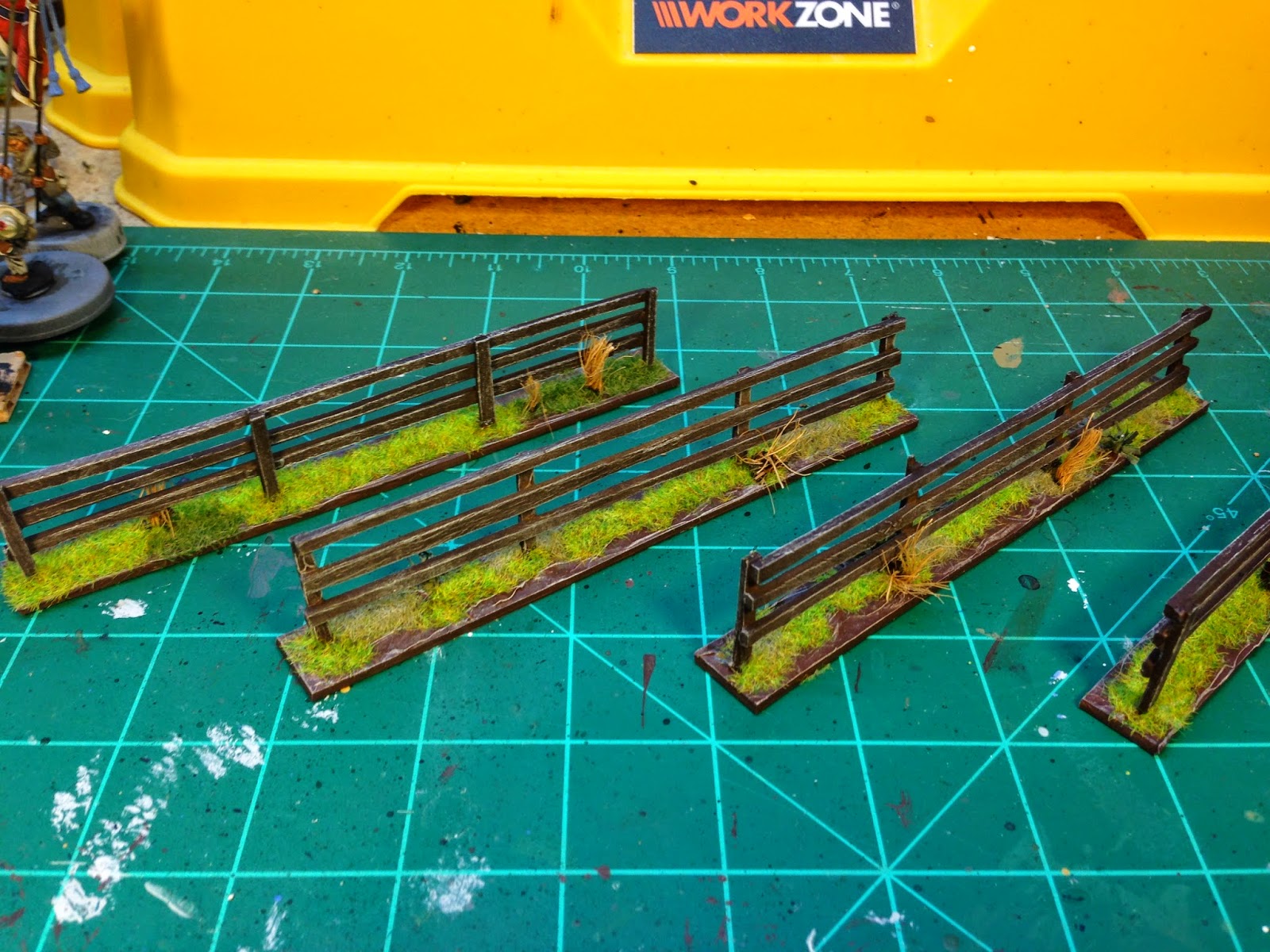It's been a pretty busy summer with all of the kids' activities and vacations, however, I have managed to make progress on a few small projects. Starting with my trench project, I have continued with terrain that while primarily for WW2, I suppose much of it could serve as ACW pieces too.
I wanted to make some slender foliage pieces that could serve as tree lines for dividing land parcels or more hedgerows (as I need a lot more of these). Here's what I've come up with in relatively short order:
These were made by cutting pieces of Sintra and simply PVAing sand to them, painting with a brown basecoat, and drybrushing with Hippo Gray. It was a Woodland Scenics and hot glue gun from there. I sprayed them down really good with WS scenic cement as well.
I also decided to add to the few WW2 ruin pieces:
I absolutely love the Dave Graffam kits. Some of these pieces are made from one of his small ruin kits, but a few I custom made from another of his kits. The nice thing about his stuff is if you have the time and patience, they are extremely affordable, require little painting (none if you're not picky like me), obviously very light-weight, and most are customizable, so the possibilities for what you can create with a single kit are very broad.
More ruin pieces I made with Sintra bases, light talus and sand, craft sticks, and small bricks I made out of scrap pieces of foam-core:
In a previous post I mentioned I had no intention of painting any this summer, but I got my hands on a box of Bolt Action plastic U.S. Rangers and decide to tinker a little. I think these 29th I.D. troops will fit in nicely with the 101st and 2nd Rangers I already have:



















































